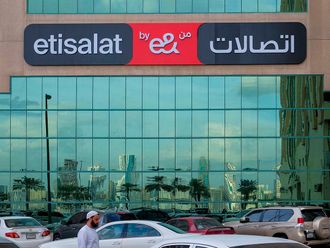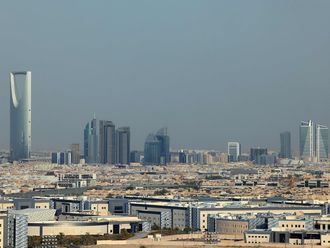Indian shares have been caught in the downward draught of global markets as China’s slowing growth roiled investors, but pundits aver the drop is overdone as New Delhi is well on the path of an economic rebound. A weakened rupee, thanks to the emerging market currency shakedown caused by the yuan’s tumble, makes it further cheaper for foreign investors to scoop up Indian stocks.
While China’s factory activity is seen contracting at its fastest clip since the global financial crisis in 2009, manufacturing in India is picking up steam. Inflation is running at multi-year lows and the clamour for rate cuts is growing stronger which, when it happens, should bolster investment and consumer spending.
India’s exposure to the Chinese economy is far less than other countries like South Korea, Japan, Malaysia, Thailand and Australia, giving New Delhi more elbow room to withstand Beijing’s slowdown. The global slump in commodity prices, particularly oil, also provides a boon to India that is heavily dependent on energy imports.
Further, India’s nearly $2 trillion economy is driven by domestic demand. With a growing middle class of between 300-400 million people, more than the population of the United States, the domestic market is huge and sufficient to sustain strong growth for many decades. Multinational companies want to invest in India because of massive potential they see in the domestic demand.
“The drop in shares and the rupee’s weakness provides smart investors a big opportunity to accumulate stocks cheaply,” said equity salesman Anmol Bhushan. “The macro factors indicate an improving economy and the outlook for earnings is better as we head into the second half of the (financial) year.”
As large foreign funds pull out from China, part of the cash could flow into India, he said. There are signs that this is happening as Indian shares have dropped much less than other emerging markets over the past two weeks.
“Interest in the region at first gravitated to the booming market in China, but with the bubble there now pricked, the performance of China’s immediate Asian trading partners has suffered, too,” Aberdeen Asset Management said.
“India has been relatively insulated from these developments, hence the outperformance.”
Nevertheless, the top-30 Sensex and the broader Nifty shed 2.5 per cent and 2.6 per cent respectively over the week to their lowest close in two months.
Rate cuts seen
Doubtlessly, New Delhi and the central bank need to do more to improve the investment climate, lift business confidence and encourage consumer spending — all vital to drive growth in this vast nation of more than 1.2 billion people.
The Reserve Bank of India (RBI) has lowered its main policy rate by 75 basis points since mid-January, but with wholesale price contracting and consumer inflation at record lows the clamour for cutting borrowing costs is growing louder.
Pressure is mounting on the Mumbai-based central bank to ease policy, with mandarins in New Delhi pushing for a reduction of 50 basis points quickly. Corporate honchos have also stepped up their demand for lowering interest costs to boost sales and kick-start investment.
“Hopefully, the impact of inflation being under control is a factor which ... the central bank, with all its wisdom, will take note of,” Finance Minister Arun Jaitley said this week.
However, RBI Governor Raghuram Rajan is unlikely to heed the demand in haste. He would rather await the Federal Reserve’s decision on US rates in mid-September before making his move on domestic rates. The RBI’s scheduled policy meeting is on September 29, and Rajan is likely to lower rates before that date.
Most economists expect a 25 basis points rate cut, with the central bank cautious because of the rupee’s slide to below 65.50 to the dollar, the weakest in two years. The currency’s slide could push up inflation as imported goods would cost more. The impact of deficient rainfall also has the potential to drive prices of farm produce higher. Onion prices, for instance, have already shot up.
“While the weak inflation print has led to the market pricing in more rate cuts, we would still exercise some caution. The probability of a further rate cut has risen, but it is still not our base case due to several reasons,” Goldman Sachs India economist Tushar Poddar said.
Pranjul Bhandari and Prithviraj Srinivas, economists at HSBC Securities and Capital Markets (India) Private Limited, have revised their call from “prolonged pause” to 25 basis points cut on September 29.
Meanwhile, Governor Rajan has warned about the dangers of competitive currency moves by countries in the wake of the yuan’s depreciation.
“I think if the Chinese depreciation holds to about this level, it’s not something that one should be overly concerned about,” he said in a speech at a banking event in Mumbai.
“If it’s part of a process of getting competitive advantage through ... longer term depreciation it has to be worrisome across the world, partly because you could have tit-for-tat actions.”
Adani Ports, Petronet LNG
Brokerages are advising investors to buy shares in Adani Ports and Special Economic Zone, India’s largest private sector port operator and the builder of the country’s biggest special economic zone at Mundra in Gujarat.
Lokesh Garg and Vaibhav Jain, analysts at Credit Suisse, said the Adani Group company has “several aces up the sleeve” to drive growth from just Mundra port earlier.
“ADSEZ is now a diversified play with several assets such as Dahej, Dhamra and Hazira scaling up. Ennore and Vizhinjam will add south cargo and transshipment volumes,” they wrote in a report to their clients. “Fruition of discussions such as LNG Terminal, refinery at Mundra, LNG terminal at Dhamra, manufacturing investments at SEZ can add upside.”
“While the stock is expensive we retain outperform due to strong earnings growth even with modest volume growth at Mundra on operating leverage (flat interest and depreciation costs) and growth at other assets.”
The brokerage raised its 12-month target price on the stock to Rs. 390. It closed at Rs. 364.70 on Friday.
Citigroup analysts Atul Tiwari, Venkatesh Balasubramaniam and Maulik Doshi were also impressed by Adani Ports performance in a weak environment.
“Strong execution and strategic planning has led to APSEZ having 14 per cent share in total throughput at India’s ports with improving cash generation,” they said in a note. “APSEZ remains one of our top picks.”
BNP Paribas upgraded Petronet LNG to a buy from hold, citing higher spot volumes offsetting lower offtakes of LNG from its long-term contractual sales deal with Qatar’s RasGas Co. Ltd.
“In addition, the Kochi-Mangalore pipeline leg is due to start this year, which should result in incremental volumes for the Kochi plant,” analyst Amit Shah said in a report, raising the brokerage’s target price on the stock to Rs. 213. The share closed at Rs179 on Friday.
“We like Petronet’s long-term positioning as a key LNG player, especially as the demand-supply gap continues to widen on account of a fairly lacklustre domestic gas production outlook and LNG slowly becoming the fuel of choice after coal.”
The writer is a journalist based in India.












